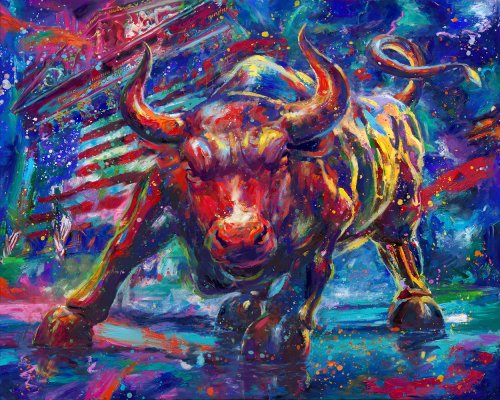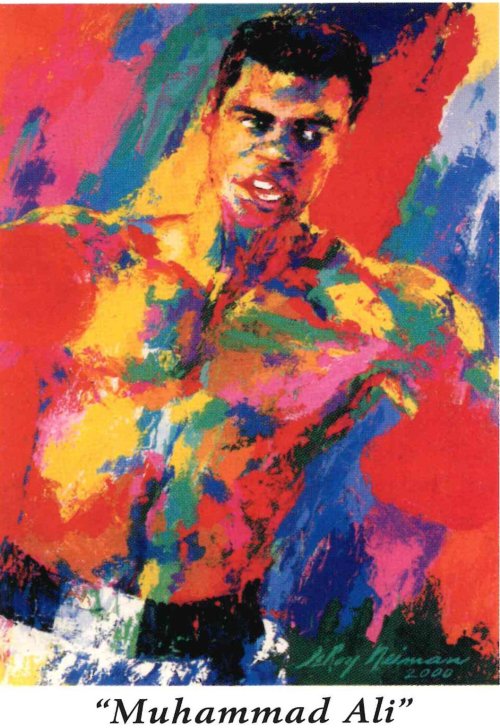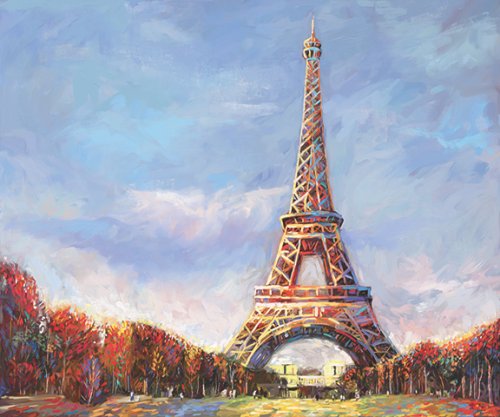Is art a good investment? The recent mega-auctions in New York have brought out the siren song that art often outperforms other asset classes like real estate, while the Wall Street Journal declared that art achieved a 10.6 percent return in 2018 based on Art Market Research’s Art 100 Index, outpacing all other categories. One would think then that many savvy investors should be allocating funds to this glamorous asset class.
Most art market pundits will advise collectors to “buy what you love,” and not speculate on making a profit on acquisitions, but nevertheless imply that substantial appreciation on par with traditional asset classes is a hallmark of the art market in the post-war period.
Every season each major auction house has at least one or two outstanding estates, put together over several decades, that achieve substantial appreciation in some portions of their aesthetic choices—like the Mayers of Chicago, who fortuitously bought Robert Rauschenberg’s Buffalo II (1964) from Leo Castelli in 1964 for $16,900, and which sold last month for $88.8 million with fees—that appear to give credence to the inevitability of enormous asset appreciation. However, given that a mere dozen or so estates appear to make the grade in any given year at the evening sales in New York and London, what might that mean for the thousands of other art collectors in the same generation who somehow have not come out for the party?
Dark matter
It is possible to make money on art, but the more specific question is whether it is an attractive asset class for a middle market investor with a typical 5–10 year horizon analogous to other alternative investments. One of the chief challenges to adjudicating the merits of art as an investment, then, is having a transparent picture of its true annualized rate of return and its relative correlation with other asset classes in promoting a diversified portfolio.
Most of the established benchmarks for demonstrating this return are understandably focused on the observable price trends at auction as the only securely available dataset. However, this fixation on the available sales data tends to gloss over the often invisible background from which this data arises.
Much like the universe itself, one of the chief opacities to understanding the true economics of the art market is the enormous influence of ‘dark matter’ on asset prices. This dark matter consists in the vast number of artworks that have not, cannot, or will not, come to market, but nevertheless apply an invisible gravitational pull on the asset prices we can actually observe. These reservoirs of non-transactional works serve to artificially underwrite scarcity and aggravate demand, and both support the rarified prices of that very thin sliver of works that do come to market and distort the appearance of returns on investment for the category as a whole. In short, this unseen dark matter is just as important as the few star lots grabbing headlines every auction season.
A large portion of this dark matter comes in the form of museum accessions, which in effect serve as primordial black holes that sequester masterpieces from the marketplace through donations and museum acquisitions, but for the most part they will never be sold again. The recent shibboleth that Salvator Mundi (ca. 1500) is the “last” Leonardo da Vinci painting in private hands implies the fewer than 20 recognized examples in public collections will never return to the marketplace, and amplifies the price accordingly. Indeed, the enormous growth of museum collections, which has winnowed the ranks of masterpieces available since World War II, has contributed to the appearance of scarcity and an enormous inflation effect on those rarified asset prices.
Museum accessions also go hand in hand with the powerful effect of philanthropic giving for highly taxable estates. One can be quite sure that the recent buyers of David Hockney’s Portrait of an Artist (Pool with Two Figures) (1972) and Jeff Koons’s Rabbit (1986)—both of which hammered at $80 million—are not buying them for investment, or planning to turn around and sell them for $160 million in 5 or 10 years. There is a powerful philanthropic driver beyond the investment horizon that inflates asset prices for trophy artworks in the marketplace. If you are generating billions in capital gains or other income, you may be perfectly comfortable acquiring an $80-million artwork if the subsequent donation of that work to your non-profit foundation mitigates other tax liabilities on your balance sheet. This gambit drives most of the high-value acquisitions we see at auction, of works that will likely never return to the market again. Most of the major contemporary collectors spending at that rarified level are not planning to re-sell, and certainly are not buying for investment in the traditional sense, but rather allocating a portion of their wealth to assets that allow them to enjoy the blandishments of a private museum or major philanthropic gift, accompanied by a huge tax write-off that this inflation effect helpfully holds aloft.
A second field where dark matter resides is in the vaults of dealers’ unsold inventory of primary market material, as well as a select group of market makers who own large positions in a given artist’s work. In both cases, these entities are often active bidders and third-party guarantors who support prices in their chosen sector, in order to provide stable benchmarks for that unsold inventory. If these large reservoirs of material were not temporarily off the market, prices would crater as supply would quickly outstrip demand.
Both of these reservoirs of dark matter—trophy works destined for museum accession or philanthropic donation and unsold inventory—serve to keep prices afloat and maintain artificial scarcity for the thinly traded population of works that do come to market each season. One nagging uncertainty to ascertaining future growth then is if any of these reservoirs were to be breached—if deaccessions suddenly became more widespread, the tax laws changed, or substantial private inventories were liquidated—then this artificial scarcity would quickly be nullified.
Another, and less understood, reservoir of this dark matter, but possibly the most consequential, is the vast number of private collections—acquired either at auction or the primary market—which remain stubbornly underwater, or are worth less than their combined acquisition and liquidation costs.
It may come as a shock to some, but after many years of appraising collections assembled in the last 30 years, I would conservatively estimate that a substantial majority would realize less than they cost to acquire if they were to be liquidated, given the enormous transactional costs associated with buying and selling art.
A significant portion of past acquisitions typically do not come to market, and this enormous deadweight loss is like an invisible lodestar on the apparent annualized rate of return of artworks that are often only calculated from actual repeat sales. The works that come for resale are on balance mostly the winners that have achieved significant price inflation, making them a poor proxy for the true asset appreciation for the category.
This enormous reservoir of underperforming assets, scattered across numerous private balance sheets and thus difficult to discern, does not normally come into the marketplace to demonstrate its eroding state of depreciation, except in piecemeal fashion through eventual death, divorce, or duress. This enormous, hidden cache of dark matter is the unseen lodestar significantly depressing the true annualized rate of return for artworks as a whole.
Sample selection bias
We can catch a glimpse of this elusive third form of dark matter and its impact on prices in the groundbreaking art economics paper by University of Southern California professor Arthur Korteweg and two European colleagues, Roman Kräussl and Patrick Verwijmeren, which exposes the potential sample selection bias of some art indices, like Mei Moses (now owned by Sotheby’s), which employ repeat sales to calculate annualized returns for various segments of the art market. The paper’s hypothesis is that artworks that have significant price appreciation are more likely to come to market and result in higher observed returns relative to the population at large, leading to a sample selection bias that must be adjusted accordingly, yielding a much less sanguine investment profile.
In order to demonstrate this effect, Korteweg et al. set out to construct their own art data set of repeat sales drawn from the Blouin Art Sales Index, and identify 2.3 million paintings sold between 1960 and 2010 for their sample population. Seeking out all identifiable repeat sales, and leaving out indeterminate matches, buy-ins, and other outliers, they locate 32,928 paintings which have a total of 69,103 repeat sales (some more than once).
It is particularly noteworthy that less than two percent of this population (32,928 paintings out of 2.3 million sold at auction between 1960 and 2010), have demonstrably sold more than once in this 50-year period. What happened to the other 98 percent? Many remain in private estates and have been gifted to museums, and many could have been sold privately, but even granting those caveats, less than two percent is a very slim recursion rate for appearing again at auction over half a century, especially during a period that has anecdotally been construed as one of the longest bull markets in art history. One corollary implication of Korteweg’s paper is that at least some of those paintings have not been reoffered because they would incur a loss and have languished as underperforming assets compared to the cohort who have enjoyed repeat sales. This gets at a fundamental flaw of art indices that do not adjust for this selection bias.
Building an alternative model that does account for this bias, the paper found that the average annual rate of return for paintings in their sample drops from 8.7 percent to 6.3 percent, and the corresponding Sharpe Ratio (a measure of risk vs. return) drops from a robust 2.7 percent to a meagre 1.1 percent. They conclude that a well-balanced investment portfolio, taking into account this sample selection bias when compared to other asset classes like stocks and bonds, would allocate exactly 0 percent of their assets to paintings as a category. While paintings may have a modest annual adjusted return of 6.3 percent between hammer prices, according to this model, the enormous additional transactional costs further erode this picture to the point that art as an investment vehicle may seem a contradiction in terms.
The eighty percent rule
Art investment skeptics often underscore the price opacity and lack of liquidity of the underlying asset, and the difficulty in picking winners, among other factors that dampen the prospects of art as an investment vehicle. However, there is also a much more straightforward structural challenge: the enormous transactional costs of entering and exiting a position through the auction markets.
Most market participants are aware that acquiring works at auction is often the most cost-effective measure, as retail prices from dealers are typically pegged at a significant premium to what is termed fair market value at auction (usually measured as the hammer price plus buyer’s premium). A simple calculation will indicate that the aggregate transactional costs of entering and exiting an investment in this market are a substantial drag on any prospective appreciation, which many investors may simply overlook in the calculation of annualized returns.
Say you are a New York City resident who has $10,000 to invest in the auction market. To stay within that budget, you would likely need to limit your maximum bid to around $7,000 to cover the buyer’s premium (25% at most houses: $1,750), New York sales tax (8.875%: $621) and shipping and handling ($629 for argument’s sake, to round out the total). So, your $10,000 allocation is already saddled with a 30% depreciation at the very outset of the investment, significantly weighing on its future prospects.
Bracketing aside any expenses for insurance, conservation, or other carrying costs, after five years you elect to sell the same work, and you have the unexpected windfall of an 80% return, or $12,600 from the original hammer price of $7,000. Unless you have negotiated special terms, you will typically owe the auction house a 10% seller’s commission (so, minus $1,260), 1.5% insurance fee (minus $189), photo fee (minus $200), and shipping and handling again (minus $629), for a net total of $10,322. The good news is you have a modest return of $322, but you may still owe the 31.8% in capital gains tax on collectibles on this portion (about $102.40), yielding a net return of about $219 and change.
The above scenario assumes standard rates and sales tax charges that may not apply in all cases, but as a benchmark it illustrates most market participants need to have a minimum of an 80% baseline appreciation simply to break even when entering and exiting an investment in the auction markets.
Many individual works and whole market categories have met or exceeded this appreciation in short periods of time, but the general benchmark from Korteweg’s study is an annual return of about 6.3%. This would suggest that many putative investments, in the absence of a means to obviate these transaction costs, are operating at a significant loss. We find substantial confirmation for this supposition from the extremely low recursion rates for paintings in Korteweg’s 50-year sample. Most people don’t sell art if they’re going to lose money in the process, and so it remains in limbo until their slow appreciation may eventually exceed their cost basis, or they are forced to sell. Thus, the specter of this vast field of dark matter looms behind the apparent appreciation of observed prices.
Original Link: https://www.artsy.net/article/artsy-editorial-often-ignored-problem-buying-art-investment








